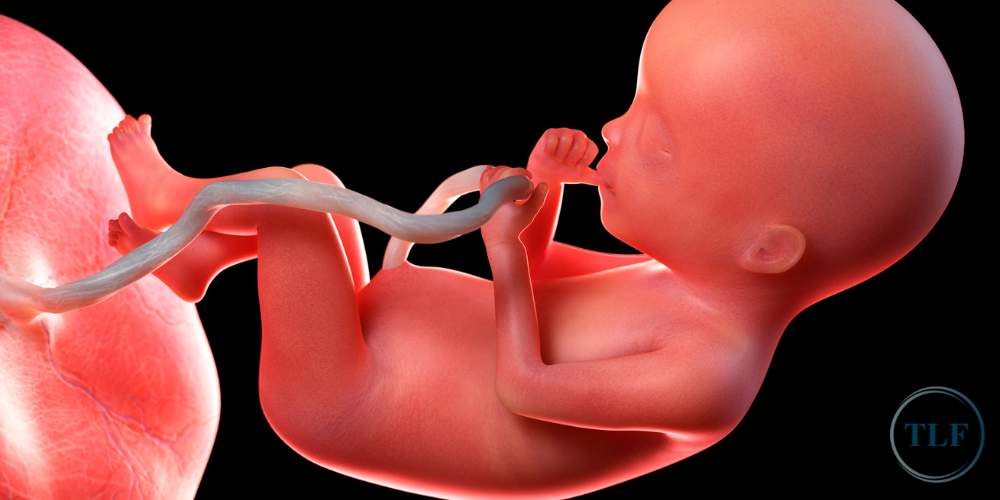Putting Our Knowledge And Experience To Work
Home » Birth Injuries » Compressed Umbilical Cord
Compressed Umbilical Cord
Ohio and Northern Kentucky Birth Injury Lawyers for Compressed Umbilical Cord Injuries
At TLF: The Medical Injury Law Firm, our seasoned birth injury attorneys have extensive experience representing families affected by birth injuries, including those arising from umbilical cord incidents. Our medical malpractice lawyers understand the challenges surrounding these intricate cases and the impact they can have on your child’s health and development. With a focus on compassionate representation and a commitment to achieving justice, you can trust our Cincinnati and Northern Kentucky birth injury lawyers to support you through every step of the legal process.

If your child was injured due to negligence during birth, contact TLF: The Medical Injury Law Firm at (800) 698-4054 to schedule a free consultation with an experienced medical malpractice attorney today.
What is a Compressed Umbilical Cord?
A compressed umbilical cord can occur due to a number of different reasons, such as knots in the cord, the cord becoming wrapped around the baby’s neck, or pressure from the baby’s position in the womb. The umbilical cord carries oxygen and essential nutrients to the fetus and removes waste products, so any compression can lead to decreased oxygen and nutrient supply.
This situation can result in distress and, if not promptly addressed, may lead to serious health issues for the baby, including brain damage, developmental delays, and in severe cases, stillbirth.
Causes of Umbilical Cord Compression
Umbilical cord compression is a critical condition that can occur before or during childbirth. From common occurrences like umbilical cord prolapse, knots, and entanglement, to less frequent issues such as excessive fetal movement or a long umbilical cord, understanding these causes is imperative for expectant parents.
Nuchal Cord
A nuchal cord occurs when the umbilical cord wraps around the baby’s neck one or more times. This situation can happen at any point during pregnancy, especially as the fetus moves and turns within the womb.
Umbilical Cord Prolapse
Umbilical cord prolapse, a situation where the umbilical cord slips through the cervix into the birth canal ahead of the baby during delivery, can lead to critical complications, including severe oxygen deprivation.
True Knots
A knotted cord occurs when the baby’s umbilical cord itself twists into a knot during pregnancy. While relatively rare, these knots can pose serious risks to the developing fetus by restricting blood flow and oxygen delivery.
Excessive Length of the Umbilical Cord
An unusually long umbilical cord can pose unique risks, such as cord entanglement, a prolapsed cord, or the formation of true knots, each of which can lead to compromised fetal oxygen and nutrient supply.
Short Umbilical Cord
On the opposite side of the spectrum, a short umbilical cord can also lead to complications such as restricted fetal movement and, in severe cases, can result in preterm labor, low birth weight, or abnormal fetal presentation.
Tangled Cord
Tangled umbilical cords, where the cord becomes wrapped around the fetus or entangled in its limbs, pose significant risks for impeding proper blood flow and oxygen delivery.
Cord Entanglement with Twins or Multiples
Cord entanglement in pregnancies involving twins or multiples represents a heightened risk due to the shared space and increased movement of the fetuses, leading to situations where the umbilical cords may become intertwined or compress each other.

Oligohydramnios
Oligohydramnios is a condition that occurs when there’s too little amniotic fluid surrounding the fetus, which can lead to serious complications for both the mother and child. Too little amniotic fluid can lead to developmental problems, restricted fetal movement, and complications during labor, such as compressed umbilical cords.
Vasa Previa
Vasa previa is a rare but serious condition where fetal blood vessels cross or run near the internal opening of the uterus, outside the protective umbilical cord or placenta. These vessels are at risk of rupture during labor or when the membranes rupture, leading to potentially life-threatening fetal blood loss.
Amniotic Band Syndrome
Amniotic band syndrome is a rare congenital condition where fibrous bands from the amniotic sac entangle fetal body parts, potentially leading to abnormalities or even amputations of limbs or digits. This condition typically occurs during early pregnancy when the fetal tissues are still developing.
Umbilical Cord Compression Symptoms
Umbilical cord compression during pregnancy or labor can present various symptoms, including decreased fetal movement, irregular heart rate patterns on fetal monitoring, meconium staining (indicating the passage of fetal stool), changes in the mother’s vital signs (such as elevated blood pressure or heart rate), and signs of oxygen deprivation in the fetus, such as a decrease in the baby’s heart rate variability.
In more severe cases, umbilical cord compression can lead to sudden and significant drops in the baby’s heart rate, known as decelerations, or even a prolapsed cord visible at the vaginal opening.
Umbilical Cord Compression Risks and Complications
A number of dangerous complications can arise due to reduced blood flow and oxygen supply to the fetus, which may lead to fetal distress, hypoxia (oxygen deprivation), and even stillbirth in severe cases.
Prolonged or severe compression can result in fetal acidosis, a condition where there is an imbalance in the body’s pH levels due to the accumulation of metabolic waste products, further compromising the baby’s health.
In some cases, umbilical cord compression may require emergency interventions, such as an emergency cesarean section, to prevent adverse outcomes. For the mother, complications such as placental abruption or uterine rupture may occur if the compression leads to excessive strain on the uterus during labor.

How Often Do Umbilical Cord Accidents Happen?
Umbilical cord accidents are relatively rare during pregnancy and childbirth, but they still pose a significant risk to all expectant mothers. According to a study conducted by the National Library of Medicine, of 496 stillbirths observed, 19% of those were attributable to umbilical cord abnormalities.
Healthcare providers are trained to monitor for signs of umbilical cord complications and should intervene as quickly as possible if such incidents occur. Failure to recognize umbilical cord problems can result in serious complications for both the mother and child.
How To Prevent Umbilical Cord Accidents
Preventing umbilical cord accidents, including umbilical cord compression, depends on proactive measures throughout pregnancy and childbirth. Adequate prenatal care, including regular check-ups and ultrasounds, allows healthcare providers to monitor fetal development and detect signs of umbilical cord issues early on.
Proper positioning of the fetus during labor and delivery can also help minimize the risk of cord compression or prolapse. In some cases, elective cesarean delivery may be recommended for pregnancies deemed high-risk for umbilical cord accidents.

Can You Sue For Compressed Umbilical Cord Birth Injuries?
Whether you can sue for umbilical cord birth injuries depends on the circumstances surrounding the injury and evidence of medical negligence. While umbilical cord compression injuries can result from natural complications during childbirth, they can also occur due to medical errors or negligence on the part of healthcare providers.
If it can be shown that the injury was caused by the failure of healthcare professionals to properly monitor, recognize, or respond to umbilical cord compression in a timely and appropriate manner, you may have grounds for a medical malpractice lawsuit.
Establishing Medical Negligence
Establishing medical negligence in an umbilical cord compression injury case typically involves demonstrating that the healthcare provider(s) involved breached the standard of care expected in similar circumstances. This medical breach of care could include failing to monitor the fetus during pregnancy or labor, misinterpreting fetal monitoring results indicating signs of distress, delaying necessary interventions, or inadequate response to complications arising from umbilical cord compression.
It must be demonstrated that this breach directly caused the injury or worsened its outcome, harming the mother or baby. Expert medical testimony is often essential in establishing negligence by illustrating how the healthcare provider’s actions deviated from accepted medical practices and directly contributed to the injury.

How TLF Can Help With Compressed Umbilical Cord Injury Cases
At TLF: The Medical Injury Law Firm, our experienced medical malpractice attorneys are dedicated to supporting families affected by umbilical cord injuries. Our process begins with a thorough case evaluation and consultation, where our legal team reviews the details of each umbilical cord injury case to assess its merits and determine the best course of action.
We understand the importance of reviewing medical records, including prenatal care, labor and delivery documentation, and fetal monitoring reports, to identify any deviations from the standard of care that may have contributed to the injury. Additionally, we recognize the critical role of expert testimony in building a strong case.
Our medical malpractice attorneys work closely with leading medical experts to analyze the facts of each case, interpret complex medical information, and provide authoritative opinions regarding the injury’s causation and the damages suffered by the affected parties.
What To Expect When Working with TLF
When working with TLF, clients can expect compassionate and dedicated legal representation tailored to their unique needs and circumstances. From the initial consultation to the case resolution, our experienced birth injury attorneys guide clients through every step of the legal process with transparency and professionalism.
Clients can trust in our commitment to achieving the best possible outcome and securing the compensation and justice they deserve for them or their child’s injuries. With TLF, clients can expect unwavering advocacy and support as we strive to protect their rights and pursue accountability for medical negligence.

Call the Northern Kentucky and Cincinnati Birth Injury Attorneys at TLF: The Medical Injury Law Firm Today
TLF: The Medical Injury Law Firm provides compassionate guidance and steadfast legal representation for families throughout Northern Kentucky and the Cincinnati area navigating birth injury cases. Our experienced medical malpractice attorneys advocate for those affected by umbilical cord compression injuries and are committed to securing the compensation and support needed to address the challenges ahead.
If you or a loved one has experienced a childbirth injury, call TLF toll-free at (800) 698-4054 to schedule a free consultation with one of our compassionate medical malpractice attorneys today. You may also reach our Covington, KY law office at (859) 578-9130, our Cincinnati law firm at (513) 651-4130, or complete our online intake form to get started today.
Practice Areas
You Pay No Fees Unless We Win!
We are happy to offer a free consultation to evaluate your case. If you hire us as your legal counsel, we will represent you on a contingency-fee basis. You will pay no attorneys’ fees unless we recover financial damages.
